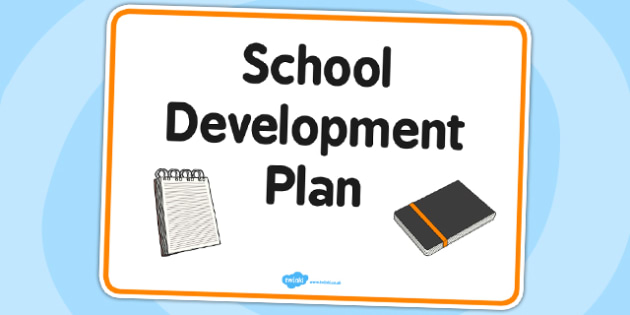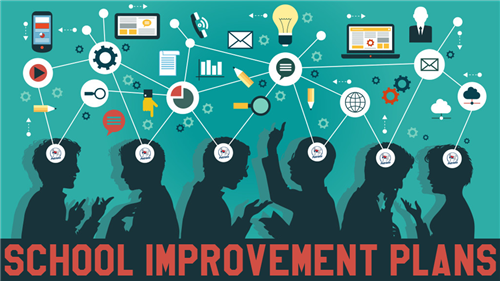This experience taught me that school improvement isn’t about implementing a single program or initiative—it’s about creating systematic change through collaborative leadership, data-driven decision making, and unwavering focus on student needs. Whether you’re a school administrator, teacher, board member, or involved parent, understanding the key drivers of school improvement can help you contribute to positive change in your educational community.
Understanding the School Improvement Process

School improvement is a continuous cycle of assessment, planning, implementation, and evaluation aimed at enhancing student outcomes. According to educational research, successful improvement efforts are systematic rather than episodic, and they address both academic and non-academic factors that influence student success.
The most effective improvement processes share several characteristics:
- They’re data-informed, using multiple measures to identify needs and track progress
- They involve stakeholders at all levels, from students and parents to teachers and administrators
- They align resources (time, money, personnel) with identified priorities
- They recognize that sustainable change takes time, typically 3-5 years for significant improvements
When I began my work at Lincoln, our first step was conducting a comprehensive needs assessment that looked beyond test scores to examine attendance patterns, disciplinary data, staff satisfaction, curriculum alignment, and physical infrastructure. This holistic approach revealed interconnected issues that a narrower assessment might have missed and helped us develop a more effective improvement plan.
Building a Culture of High Expectations and Continuous Improvement
Perhaps the most fundamental element of school improvement is cultivating a culture where excellence is expected and continuous improvement is the norm. This cultural foundation supports all other improvement efforts.
Establishing a Compelling Vision and Clear Values
Successful schools operate from a shared vision that articulates what success looks like for all students. This vision should be ambitious yet achievable, focused on student outcomes, and reflective of the community’s values.
At Lincoln, we spent significant time developing our vision statement: “Empowering every student to excel academically, think critically, and contribute positively to society.” More importantly, we regularly referenced this vision in decision-making discussions, asking, “How does this support our goal of empowering every student?” This consistent reference point helped maintain focus amid competing priorities.
Alongside the vision, we established core values that defined how we would work together:
- Equity in opportunity and outcomes
- Evidence-based practice
- Collaboration and collective responsibility
- Growth mindset for students and adults
These values weren’t just words on a poster—they were actively reinforced through our hiring practices, professional development, student recognition programs, and daily interactions.
Fostering Distributed Leadership
School improvement can’t be sustained through the efforts of a single charismatic leader. Research consistently shows that distributed leadership—involving teachers, staff, students, and families in meaningful decision-making—leads to more effective and sustainable improvements.
At Lincoln, we created a school improvement team that included representatives from each grade level and department, as well as parents and student representatives. This team analyzed data, identified priorities, and monitored progress. We also established teacher-led professional learning communities focused on specific improvement areas.
One of our most successful initiatives came from a sixth-grade math teacher who proposed restructuring our schedule to create intervention blocks. Her front-line perspective helped us design a system that worked for both students and teachers—something my administrative viewpoint alone couldn’t have achieved.
Using Data to Drive Decision Making
Effective school improvement requires moving beyond gut feelings and anecdotes to make decisions based on robust evidence. This data-driven approach should encompass both quantitative measures (test scores, attendance rates) and qualitative information (student work samples, classroom observations, survey results).
Implementing Comprehensive Assessment Systems
Schools showing sustained improvement typically utilize balanced assessment systems that include:
- Summative assessments that evaluate learning at the end of instructional periods
- Formative assessments that provide ongoing feedback during the learning process
- Diagnostic assessments that identify specific student strengths and needs
- Progress monitoring that tracks growth toward specific goals
When I arrived at Lincoln, the school was primarily focused on annual standardized tests, with results arriving too late to inform instruction for the students tested. We gradually built a more comprehensive system that included quarterly benchmark assessments, common formative assessments developed by teacher teams, and weekly progress monitoring for students receiving interventions.
This multi-layered approach provided timely information to guide instructional adjustments at the classroom, grade, and school levels. Within two years, teachers were regularly using assessment data to form flexible student groups, adjust pacing, and target specific skills—practices that contributed significantly to our improved outcomes.
Developing Data Literacy Among Staff
Having data isn’t enough—staff must be able to interpret and apply it effectively. Building data literacy across the school community is essential for improvement efforts.
At Lincoln, we established regular “data dialogue” sessions where teachers collaborated to:
- Analyze assessment results to identify patterns and trends
- Examine student work samples to understand misconceptions
- Compare instructional strategies used in high-performing classrooms
- Develop action plans based on findings
Initially, these sessions were challenging. Some teachers felt threatened by data discussions, seeing them as evaluative rather than informative. We addressed this by starting with anonymous data, focusing on solutions rather than blame, and celebrating improvements alongside identifying challenges.
Within a year, the culture shifted remarkably. Teachers began voluntarily sharing their classroom data, seeking feedback from colleagues, and requesting additional assessments to better understand student needs. This evolution from data resistance to data embrace was a critical factor in our improvement journey.
Improving Instructional Quality and Curriculum Alignment
At the heart of school improvement lies the quality of teaching and learning. No amount of structural changes or new programs can compensate for ineffective instruction or poorly aligned curriculum.
Ensuring Curriculum Coherence
Many struggling schools suffer from curriculum that lacks coherence—within grades, across grade levels, and between assessments and standards. Creating alignment is fundamental to improvement.
When we examined Lincoln’s curriculum, we discovered significant gaps and redundancies. Students might learn certain concepts multiple times while missing others entirely. We undertook a systematic curriculum mapping process that:
- Documented what was actually being taught in each grade and subject
- Compared this enacted curriculum to state standards
- Identified gaps, redundancies, and misalignments
- Restructured the curriculum to ensure proper sequencing and coverage
This process revealed that our sixth-grade math curriculum devoted extensive time to concepts already mastered in elementary school while skimming over foundational algebraic thinking. Realigning instructional time with student needs contributed to significant gains in math achievement.
Implementing Effective Instructional Frameworks
Beyond curriculum alignment, improving instructional delivery is crucial. Schools making substantial gains typically adopt consistent instructional frameworks that establish common language and expectations while allowing for teacher creativity.
At Lincoln, we adopted a workshop model that included:
- Focused mini-lessons with clear learning objectives
- Guided practice with teacher support
- Independent application with differentiated tasks
- Structured reflection and formative assessment
We supported implementation through instructional coaching, peer observation, and collaborative planning. Rather than mandating specific teaching techniques, we focused on the framework’s core elements while encouraging teachers to adapt strategies to their styles and student needs.
The consistency of this approach helped students transition between classes and grades more successfully. It also facilitated more productive teacher collaboration since the shared framework gave teachers common reference points for discussion.
Providing Targeted Student Support Systems
Even with excellent core instruction, some students require additional support to succeed. Effective schools develop systematic approaches to identifying and addressing diverse student needs.
Implementing Multi-Tiered Support Systems
A Multi-Tiered System of Supports (MTSS) or Response to Intervention (RTI) framework provides a structured approach to matching interventions to student needs. This typically includes:
- Tier 1: High-quality core instruction for all students
- Tier 2: Targeted interventions for students need support
- Tier 3: Intensive interventions for students with significant needs
At Lincoln, our implementation of MTSS began with strengthening core instruction (Tier 1), as research consistently shows this has the greatest school-wide impact. We then developed structured intervention blocks where students could receive additional support without missing new content.
For Tier 2 interventions, we created skill-specific groups that changed based on ongoing assessment data. Students might receive reading comprehension support for six weeks, then move to vocabulary development as their needs changed. This fluid approach prevented students from being permanently tracked into remedial programs and allowed for more precise targeting of specific skill gaps.
For students requiring Tier 3 support, we implemented intensive, evidence-based interventions delivered by specialists, with progress monitored weekly. This comprehensive system helped reduce special education referrals by addressing learning difficulties early and systematically.
Addressing Non-Academic Barriers to Learning
Academic interventions alone are insufficient if students face significant non-academic barriers to learning. Schools showing substantial improvement typically address the whole child through:
- Social-emotional learning programs
- Behavioral support systems
- Community partnerships for basic needs
- Family engagement initiatives
At Lincoln, our data revealed chronic absenteeism as a significant issue affecting about 25% of our students. Rather than simply enforcing attendance policies more strictly, we investigated root causes through family interviews and home visits. We discovered varied issues: transportation problems, health concerns, family responsibilities, and school avoidance due to bullying or academic frustration.
Addressing these diverse causes required multiple strategies, including:
- A “walking school bus” program with staff escorts for students within a mile radius
- Partnerships with local clinics to address chronic health issues
- Before-school breakfast program that incentivized early arrival
- Mentoring program connecting chronically absent students with staff members
Within two years, our chronic absenteeism rate dropped to 12%, significantly impacting overall achievement since students can’t learn if they’re not in school.
Engaging Families and Communities as Partners
Schools don’t exist in isolation. Sustained improvement requires engaging families and community resources as active partners in the educational process.
Moving Beyond Traditional Parent Involvement
Many schools limit family engagement to traditional activities like parent-teacher conferences and fundraising events. Schools achieving significant improvement typically go further, creating authentic partnerships where families contribute to the educational process.
At Lincoln, we expanded beyond conventional approaches by:
- Conducting home visits to build relationships before school-based issues arose
- Creating a family resource center offering English classes, computer access, and assistance with basic needs
- Developing academic workshops where teachers shared grade-level expectations and strategies for home support
- Implementing student-led conferences where students presented their work and progress to family members
These efforts significantly increased family participation. Within three years, our parent-teacher conference attendance rose from 45% to 92%, and our family surveys showed marked improvement in perceptions of school accessibility and responsiveness.
Leveraging Community Resources
Community partnerships can provide resources and opportunities extending beyond what schools can offer independently. Effective schools actively cultivate these connections to enhance student experiences.
Lincoln’s community partnership strategy included:
- A mentoring program with a local technology company
- After-school enrichment activities led by community organizations
- A weekend food backpack program supported by local businesses
- Mental health services provided through a partnership with a community clinic
These partnerships provided valuable resources without straining our limited budget. More importantly, they helped students connect classroom learning to real-world applications and expanded their vision of future possibilities.
Ensuring Sustainable Improvement
Many schools experience temporary gains that fade when leadership changes, grant funding ends, or new initiatives take precedence. Sustainable improvement requires intentional planning for continuity and capacity building.
Building Internal Capacity
Rather than relying heavily on external consultants or programs that create dependency, successful school improvement builds internal capacity through:
- Developing teacher leaders who can sustain initiatives
- Creating documentation and systems that outlast individual champions
- Implementing knowledge management practices to preserve institutional learning
At Lincoln, we established a teacher leadership academy that provided interested staff with professional development in coaching, facilitating adult learning, and change management. These teacher leaders eventually led our professional learning communities, mentored new staff, and facilitated data analysis sessions—reducing dependency on administrative direction.
We also created detailed procedural guides for our core improvement processes and established electronic repositories for curriculum materials, assessment data, and intervention strategies. These systems helped maintain continuity despite normal staff turnover.
Navigating the Implementation Dip
Almost all significant change initiatives experience what researcher Michael Fullan calls the “implementation dip”—a period when performance may temporarily decline as staff learn new practices. Schools that sustain improvement anticipate and plan for this challenging phase.
During our curriculum realignment, some teachers initially struggled with the new pacing and content emphasis, leading to frustration and some parent complaints. Having anticipated this implementation dip, we had prepared by:
- Communicating with families about the changes and expected adjustment period
- Providing additional planning time and support during the transition
- Celebrating small wins and early successes
- Using formative rather than summative evaluation during initial implementation
These strategies helped us maintain momentum through the inevitable challenges of significant change.
Conclusion: School Improvement as a Journey, Not a Destination
Looking back on Lincoln’s transformation, I recognize that the most important lesson was understanding school improvement as an ongoing journey rather than a fixed destination. Even after achieving significant gains, we continued identifying new challenges and opportunities for growth.
The most successful schools maintain a culture of continuous improvement regardless of their current performance level. They recognize that educational excellence requires constant adaptation to changing student needs, emerging research, and evolving societal expectations.
For schools beginning improvement efforts, I offer these final recommendations:
- Start with honest assessment of current reality, using multiple data sources
- Focus on a few high-leverage priorities rather than attempting to change everything simultaneously
- Build coalitions of support among staff, families, and community members
- Plan for both short-term wins and long-term sustainable change
- Document your journey, including both successes and failures, to build institutional knowledge
School improvement is challenging, complex work. It requires persistence, resilience, and commitment from the entire school community. But the rewards—seeing students achieve at higher levels, teachers collaborate more effectively, and communities take pride in their schools—make it among the most meaningful work imaginable.
The transformation I witnessed at Lincoln wasn’t miraculous or dependent on extraordinary circumstances. It resulted from ordinary educators applying research-based principles with extraordinary commitment and consistency. Similar improvements are possible in any school where leaders are willing to engage in the difficult but rewarding work of systematic, collaborative change.


